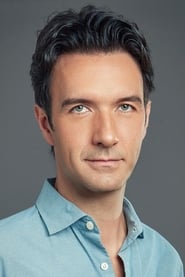
Ask Your Own Question
What is the plot?
What is the ending?
In the ending of "Not A Minute To Lose," the main character, a dedicated and passionate doctor, faces a critical moment as he races against time to save a life. After a series of intense challenges and emotional confrontations, he ultimately succeeds in his mission, leading to a resolution that highlights the importance of perseverance and the impact of human connection.
As the climax unfolds, the doctor finds himself in a high-stakes situation where every second counts. He navigates through obstacles, both physical and emotional, showcasing his determination and commitment to his profession. The tension builds as he encounters setbacks, but with the support of his colleagues and the strength of his resolve, he manages to overcome the odds. The film concludes with a sense of hope and fulfillment, emphasizing the value of life and the bonds formed through shared struggles.
Now, let's delve into the ending in a more detailed, chronological narrative.
The final act begins with the doctor, visibly exhausted but resolute, standing in the hospital's emergency room. The atmosphere is charged with urgency as alarms beep and medical staff rush around him. He is faced with a critical patient whose life hangs in the balance. The doctor's internal conflict is palpable; he grapples with self-doubt and the weight of responsibility, knowing that failure is not an option.
As he prepares for the procedure, flashbacks of his journey flood his mind--moments of triumph and despair, the faces of patients he has saved, and those he couldn't. These memories fuel his determination, igniting a fire within him. He steels himself, focusing on the task at hand, reminding himself of the reasons he chose this path.
The scene shifts to the operating room, where the tension escalates. The doctor, flanked by his team, begins the intricate procedure. Each movement is precise, yet the stakes are high. The camera captures the sweat on his brow and the intensity in his eyes, reflecting his unwavering commitment. As complications arise during the surgery, the doctor's heart races. He exchanges quick glances with his team, silently communicating the urgency of the situation.
In a pivotal moment, the doctor recalls a piece of advice from a mentor about the importance of teamwork and trust. He takes a deep breath, regaining his composure, and leads his team with confidence. They work in harmony, each member playing a crucial role, showcasing the power of collaboration in the face of adversity.
As the procedure reaches its climax, the doctor encounters a critical decision point. He must choose between a risky maneuver that could save the patient or a safer route that may not yield the desired outcome. The weight of this choice hangs heavily on him, and the tension in the room is palpable. After a moment of contemplation, he opts for the risk, driven by the belief that every life is worth fighting for.
The scene crescendos as the doctor executes the maneuver with precision. The camera zooms in on his hands, steady and determined, as he navigates the delicate procedure. The team holds their breath, and the atmosphere is thick with anticipation. Finally, after what feels like an eternity, the patient stabilizes. A collective sigh of relief fills the room, and the doctor's face breaks into a smile, a mix of exhaustion and triumph.
In the aftermath, the doctor steps out of the operating room, greeted by his colleagues who share in the victory. They exchange words of encouragement and congratulations, their camaraderie evident. The doctor reflects on the journey, realizing that the challenges he faced not only tested his skills but also strengthened his resolve and deepened his connections with his team.
As the film draws to a close, we see the doctor visiting the patient in recovery. The patient, now awake and grateful, expresses heartfelt thanks. The doctor, moved by the encounter, understands the profound impact of his work. He leaves the room with a renewed sense of purpose, ready to face whatever challenges lie ahead.
The final scenes depict the doctor walking through the hospital, a sense of fulfillment radiating from him. He acknowledges the struggles and triumphs of his profession, embracing the unpredictability of life. The film ends on a hopeful note, underscoring the themes of resilience, the importance of human connection, and the unwavering spirit of those who dedicate their lives to saving others. Each character, having faced their own trials, emerges transformed, united by their shared experiences and the lives they touch.
Is there a post-credit scene?
In the movie "Not A Minute To Lose," there is no post-credit scene. The film concludes its narrative without any additional scenes or content after the credits roll. The story wraps up with a sense of resolution, focusing on the characters' journeys and the lessons they've learned throughout the film. The absence of a post-credit scene allows the audience to reflect on the main themes and character developments without any further distractions.
How does the setting influence the events of the story?
The setting, a bustling urban environment, plays a crucial role in shaping the narrative. The fast-paced backdrop amplifies the urgency of the protagonist's quest, with crowded streets and ticking clocks creating a palpable sense of pressure. The environment also serves as a character in itself, reflecting the chaos and unpredictability of the protagonist's journey.
What role does the antagonist play in the protagonist's journey?
The antagonist serves as a formidable barrier to the protagonist's goals, embodying the fears and challenges that the protagonist must overcome. Their interactions are charged with conflict, revealing the antagonist's motivations and how they mirror or contrast with the protagonist's own journey.
What motivates the main character to take action in the film?
The main character, a determined and resourceful individual, is driven by a deep sense of responsibility and urgency to save a loved one who is in peril. This personal connection fuels their relentless pursuit, showcasing their emotional turmoil and the stakes involved.
How does the relationship between the protagonist and their ally evolve throughout the film?
Initially, the protagonist and their ally have a strained relationship, marked by distrust and differing motivations. As the story progresses, they face challenges together, leading to moments of vulnerability and shared goals, ultimately forging a strong bond built on mutual respect and understanding.
What obstacles does the protagonist face while trying to achieve their goal?
The protagonist encounters a series of escalating obstacles, including time constraints, physical confrontations with antagonists, and moral dilemmas that test their resolve. Each challenge not only heightens the tension but also reveals deeper layers of the protagonist's character and their commitment to the mission.
Is this family friendly?
"Not A Minute To Lose" is generally considered family-friendly, but it does contain some scenes that may be sensitive for children or those who are particularly sensitive.
-
Emotional Tension: The film features moments of high emotional stakes, including scenes where characters face significant personal challenges and conflicts that may evoke feelings of anxiety or distress.
-
Family Struggles: There are depictions of familial discord and misunderstandings that could be upsetting for younger viewers, as they may resonate with personal experiences of conflict or loss.
-
Intense Situations: Some scenes involve characters in urgent or perilous situations that may create a sense of suspense or fear, which could be unsettling for sensitive viewers.
-
Themes of Loss: The narrative touches on themes of loss and the impact it has on relationships, which may be heavy for younger audiences to process.
Overall, while the film is suitable for a family audience, parents may want to consider these elements when deciding if it is appropriate for their children.





































